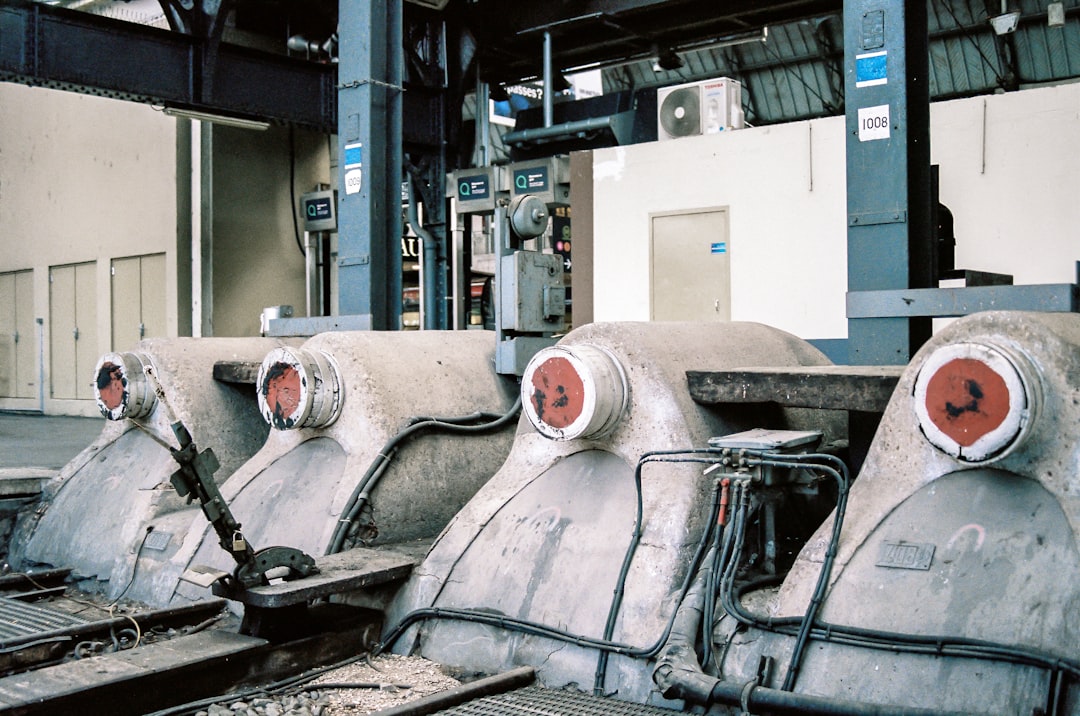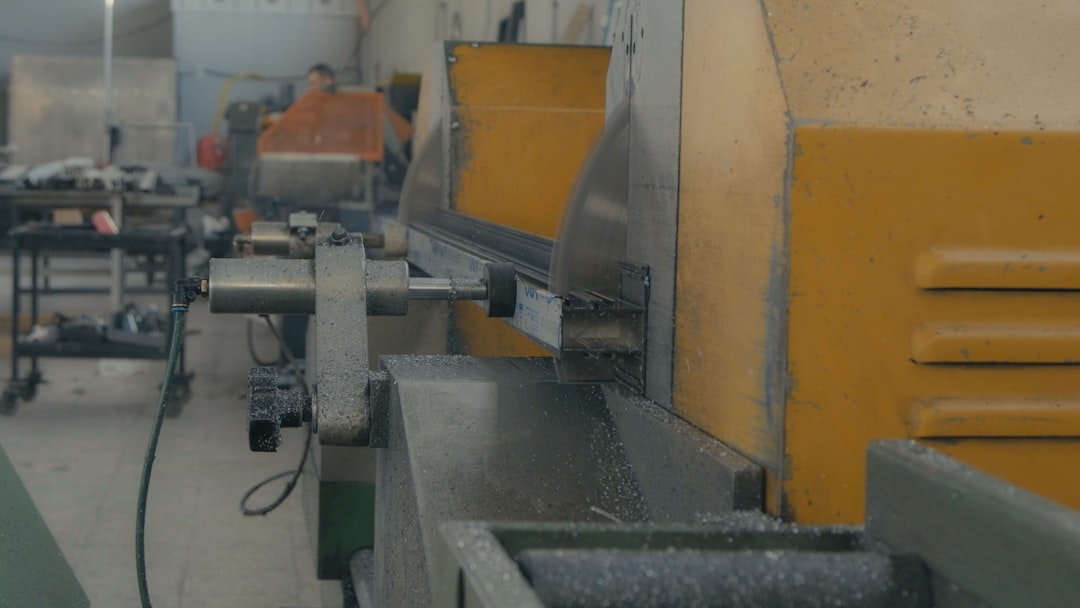

Engage prospects with a scan and streamline customer engagement with FREE QR code marketing tools by Sona – no strings attached!
Create a Free QR CodeFree consultation

No commitment

Engage prospects with a scan and streamline customer engagement with FREE QR code marketing tools by Sona – no strings attached!
Create a Free QR CodeFree consultation

No commitment
Digital advertising continues to evolve rapidly, with privacy concerns and technology advancements shaping how marketers connect with consumers. Brands now find themselves navigating a landscape that demands both innovation and responsibility. The question is no longer whether to adapt, but how swiftly and securely adaptation can happen.
Recent years have seen a sharp uptick in privacy regulations, as legislators seek to protect user data and promote greater transparency. These ongoing changes have forced advertisers to rethink data collection practices and adopt more robust consent mechanisms. Thoughtful adoption of first-party data provides a path forward, but also introduces complexities in targeting and measurement.
Marketers, meanwhile, have begun to experiment with creative formats and buy strategies that balance personalization with privacy. One approach gaining traction is the use of contextual targeting, which aligns brand messaging with content relevance rather than user behavior. This strategy offers a compelling route toward both compliance and effectiveness.
Brands now prioritize building direct relationships with customers, employing strategies that center user choice. As data becomes more fragmented, marketers turn to audience segmentation and bespoke messaging, leveraging technology to reimagine engagement and measurement. The result is a dynamic ecosystem where agility and trust form the foundation for sustainable growth.
QR codes have revolutionized the metal cleaning machine suppliers industry by transforming traditional product access and support into seamless, interactive experiences. By enabling instant access to machine manuals, maintenance schedules, and real-time troubleshooting guides, QR codes not only enhance customer satisfaction but also streamline after-sales service and reduce downtime. Imagine your clients scanning a code and immediately receiving tailored information that keeps their equipment running smoothly and efficiently.
With Sona QR, you can create dynamic, trackable QR codes that update instantly—no need to reprint labels or materials. This means you can monitor which resources your customers access most, refine your service offerings in real time, and strengthen relationships through data-driven insights. Start for free with Sona QR today and turn every scan into a powerful tool for customer engagement, retention, and growth in the metal cleaning machine supply industry.
The article does not specify particular top suppliers for metal cleaning machines that can engrave QR codes.
Laser marking machines use focused laser beams to engrave or mark metal surfaces with precise designs such as QR codes.
Laser marking provides precise, durable, and high-quality engravings on metal surfaces, making QR codes easily scannable and long-lasting.
The article does not provide specific guidance on selecting metal cleaning machine suppliers for business needs.
The article does not detail the different types of laser marking machines available for metal.

Metal cleaning machine suppliers face an increasingly complex challenge: bridging the gap between offline product touchpoints and digital buyer journeys. Traditional sales materials, equipment manuals, and in-person demos often fail to capture actionable buyer data or drive immediate engagement, costing valuable opportunities and limiting revenue attribution. High-value prospects can interact with products or attend a trade show yet remain untracked and ultimately lost because their interest is not linked back to the supplier’s CRM.
In today’s competitive marketplace, QR codes enable metal cleaning machine suppliers to seamlessly connect physical assets, such as trade show demos and product shipments, with digital experiences. Many companies struggle with missed opportunities and slow response times after initial interest, especially when critical details are not automatically captured or relayed to the right sales or support teams. By embedding QR codes on product surfaces, brochures, or packaging, suppliers can boost product traceability, simplify service inquiries, and enhance engagement—all without the need for a dedicated app. This approach ensures that every buyer touchpoint leaves a measurable digital footprint.
This overview explores how QR technology can be leveraged throughout the industrial metal cleaning equipment lifecycle, from lead capture and buyer education to post-sale support, helping suppliers prevent lost prospects, surface intent signals, and drive more measurable growth and stronger customer relationships.

Metal cleaning machine suppliers often wrestle with scattered paperwork, missed high-intent inquiries, and cumbersome manual processes that sap efficiency and leave valuable buyer signals untracked. Without reliable connections between physical interactions and digital systems, sales and service teams lack the context to prioritize accounts or respond quickly. Missing or outdated account data can lead to missed cross-sell opportunities and prevent personalized engagement.
QR codes have transformed how suppliers address traceability, identification, and customer engagement challenges, especially in inventory-heavy environments where accurate tracking is crucial. They allow every physical interaction to trigger a digital action such as a form fill, a demo request, or a support ticket. When paired with centralized platforms like Sona QR, scans become structured data that flows into your CRM and marketing tools for timely outreach, account-based nurturing, and real performance measurement.
QR-focused platforms now allow suppliers to auto-track every scan, funnel rich intent data to CRM systems, and activate account-based nurturing, so the pain of anonymous web traffic or incomplete sales signals is replaced with careful segmentation and timely outreach. The result is a closed loop between offline engagement and digital action.

Paper-first workflows introduce friction and delay. By digitizing common touchpoints, you reduce errors, speed up follow-up, and capture structured data at the source. The shift is not just about convenience, it transforms every interaction into a measurable moment that can trigger the right next step.
Suppliers in this space face a unique pain: offline-to-online gaps, where critical buyer signals from events, shipments, or in-person demos go undetected, leading to delayed or missed sales follow-ups. Lack of visibility into which companies are showing interest, with many site visitors remaining anonymous, means potential leads remain unknown and unpursued. QR codes offer an accessible bridge that works in the field, on the shop floor, and at events, without requiring an app or custom hardware.
Beyond capturing attention, QR codes deliver measurable value. They simplify complex actions such as warranty activation or parts lookup, reduce customer effort at critical moments such as an unplanned downtime incident, and feed your CRM with context-rich events that support smarter routing and prioritization. With standardized placement and clear CTAs, they become part of a consistent buyer and owner experience across machines, documents, and packaging.
By making every scan actionable and measurable, technology now supports smarter remarketing, proactive service outreach, and more personalized follow-up strategies, even in scenarios previously plagued by missed engagement or waning buyer interest. In practice, this means faster time to response, better prioritization of hot accounts, and a clearer view of which physical tactics truly drive pipeline.
Suppliers in this segment often grapple with outdated or incomplete data collection methods, which stifle their ability to follow up effectively or track customer journey milestones. Modern QR code formats help companies close these gaps by aligning the scan action to the user’s intent and the environment where the code appears.
Different formats exist for different outcomes. Selecting the right type improves user experience, increases completion rates, and ensures the data captured is immediately useful to sales and service. Dynamic codes are particularly valuable for this industry because documentation and specs change frequently. They also enable tracking, A/B testing, and campaign-level agility.
Dynamic QR codes are especially valuable, allowing suppliers to update and track campaigns as market needs shift, solving the recurring challenge of static content and inflexible tracking tools. They also power redirect rules by geography or time of day, which can be useful for event-specific offers or region-specific compliance content.

A persistent frustration for suppliers is knowing where and when buyer interest peaks, but lacking mechanisms to act on these signals instantly. Without a prompt and a seamless path to action, booth visitors walk away, operators forget to register equipment, and service requests get buried in email threads.
By embedding QR codes at high-engagement points, suppliers turn passive interest into measurable actions that start a relationship. The key is to deploy where questions occur and where decisions are made, then ensure the scan produces an immediate, meaningful outcome such as a scheduled demo or a generated support case number.
Placing QR codes where buyer actions and questions typically arise helps ensure no high-value account remains anonymous and that intent signals are captured even when traditional handoffs fail. Over time, scan data reveals which placements perform best, guiding smarter budget allocation.

Real-world supplier experience points to recurring pain points: missed follow-ups with demo attendees, untracked post-sale requests, and the inability to spot upsell readiness in existing accounts. QR code use cases now address these by reducing friction at critical junctures and standardizing data capture.
When designed with intent, each use case maps to a specific business outcome such as faster demo scheduling, improved first-time fix rates, or higher attach rates for consumables. The following scenarios are strong starting points for metal cleaning machine suppliers.
These applications replace fragmented manual follow-ups and disconnected records with automated pathways for engagement and support, producing measurable lifts in conversion and retention. They also build a habit of scanning among customers and staff, which raises adoption and multiplies data quality over time.
Suppliers who overlook the signaling value of on- and offline behavior risk missing high-fit prospects or failing to segment audiences sufficiently for personalized follow-up. Each scan carries context such as asset, location, and call to action, which can be used to infer stage and intent. Turning scans into audience segments creates the foundation for precision marketing and timely sales engagement.
With thoughtful tagging, metal cleaning machine suppliers can differentiate between plant operators, procurement teams, and engineering evaluators. These roles scan different assets and respond to distinct messages. By reflecting these differences in your campaigns and CRM, you can deliver relevance that accelerates decision-making and strengthens relationships.
This systematic data capture helps suppliers avoid the recurring frustration of missing high-value prospects simply because their interest never triggered a formal conversion event. Over time, scan behavior augments lead scoring and informs content strategy. For campaign ideas, see intent-driven retargeting.
Many suppliers invest in expensive campaigns such as tradeshows, print media, and direct mail, yet lack clarity on what actually drove engagement or created opportunities. QR code integration brings transparency by connecting offline interactions with digital behaviors that can be measured and acted upon. Learn more about offline attribution strategies to unify these touchpoints.
Treat QR codes as connective tissue across your marketing ecosystem. Standardize design, CTAs, and parameters so scan data rolls up cleanly. Equip sales and service with codes that support their workflows, then feed the results into dashboards to guide budget allocation and messaging.
By deploying QR codes in each channel and connecting scan data to marketing and sales automation, suppliers can finally link physical and digital activities. This integration ensures no opportunity or engagement clue is left on the table, while creating a smoother experience for buyers and operators. Ready to launch your next campaign? Start creating QR codes for free.
Executing a QR strategy requires clarity on objectives, solid technical choices, and disciplined measurement. Treat each deployment as a small funnel with a defined audience, a single desired action, and a way to learn from performance. A simple process prevents one-off codes from piling up without insight or impact.
The following checklist is tailored to industrial environments where collateral often lives for months or years, yet content and priorities change. Favor dynamic codes, rigorous testing in real conditions, and CRM integration to ensure your scans lead to outcomes you can attribute and optimize.
A long-standing pain point for metal cleaning machine suppliers is the inability to connect offline engagement to sales impact, making it difficult to justify campaign investments or optimize spend. QR code analytics transform every scan into a digital signal along the path to purchase. With the right tools, you can see not only who scanned and when, but also how those interactions contributed to meetings, quotes, and closed revenue.
The goal is revenue attribution, not just engagement tracking. When QR scans enter your CRM with the correct context such as asset, channel, and stage, you can build dashboards that show which placements drive pipeline. You can also enable real-time alerts when high-value accounts engage, ensuring your team moves quickly.
With Sona QR and the attribution capabilities available on Sona, an AI-powered marketing platform for identity, activation, and attribution, you can track every scan, measure engagement by channel and context, respond in real time, sync with your CRM, and connect scans to revenue. Sona’s identity resolution and buyer journey mapping unify fragmented touchpoints across buying stages, giving you a complete picture from first scan to purchase readiness.
Scaling a QR program requires consistency, education, and automation. Many teams stumble by reusing one generic code everywhere or by failing to connect scans to a follow-up workflow. Avoid those pitfalls with a playbook that standardizes how you design, deploy, and measure codes.
Consider piloting in one or two channels such as an upcoming trade show plus one product line, then expand based on measurable wins. As adoption grows, establish internal guidelines for CTA language, label placement, and data governance so your program remains compliant and effective.
Creative deployment examples tailored to this industry include placing a unique QR code on each machine’s post-sale invoice for hassle-free warranty renewal reminders, engraving codes on maintenance panels to access troubleshooting guides, and adding a “Scan to schedule quarterly service” card to every shipping crate. These practices not only combat missed opportunities but also produce measurable improvements in efficiency and retention. For durability on metal surfaces, consider laser marking machines.
For metal cleaning machine suppliers, QR codes represent much more than a digital novelty. They offer a practical solution to the recurring frustrations of anonymous engagement, slow follow-up, missed personalization opportunities, and inefficient sales cycles. By making each product, document, or event a gateway for digital interaction, suppliers no longer have to accept lost high-value prospects, invisible intent signals, or incomplete data as inevitable.
By integrating smart QR code strategies, metal cleaning machine suppliers can overcome the challenges of offline-to-online gaps and manual tracking. This approach enhances traceability across assets, fuels more meaningful interactions with buyers and operators, and drives superior marketing ROI. With platforms like Sona QR, every scan becomes an opportunity captured, every placement becomes attributable, and every campaign becomes easier to optimize.
QR codes have revolutionized the metal cleaning machine suppliers industry by transforming static product information into dynamic, interactive customer engagement tools. Whether it’s streamlining access to machine manuals, enabling instant service requests, or providing real-time maintenance updates, QR codes empower suppliers to enhance customer experiences and drive operational efficiency. Imagine your clients effortlessly accessing vital machine data on-site, reducing downtime, and improving satisfaction—all while you gain valuable insights into their needs and behaviors.
With Sona QR, creating dynamic, trackable QR codes is effortless. Update content instantly without reprinting, monitor scan analytics in real time, and connect every interaction directly to increased customer retention and sales growth. No more guesswork—just actionable data that turns each scan into a meaningful business opportunity.
Start for free with Sona QR today and unlock the full potential of QR technology to elevate your metal cleaning machine supply business.
Top suppliers include those offering laser marking machines capable of engraving durable QR codes on metal surfaces, such as Dowin Laser and HeatSign.
Laser marking machines use focused laser beams to engrave QR codes permanently onto metal surfaces, creating weatherproof and solvent-resistant marks suitable for industrial environments.
Laser marking provides durable, long-lasting QR codes that withstand harsh industrial conditions, ensuring traceability, easier service access, and reliable scanning without wear or fading.
Choose suppliers who integrate QR code technology for traceability and engagement, offer durable marking options like laser engraving, provide dynamic QR code solutions, and support CRM integration for measurable buyer data.
Different types include machines designed for permanent engraving on metal surfaces that vary by technology and capability, such as fiber lasers and CO2 lasers, with features supporting QR code marking in industrial settings.
Use Sona QR's trackable codes to improve customer acquisition and engagement today.
Create Your FREE Trackable QR Code in SecondsJoin results-focused teams combining Sona Platform automation with advanced Google Ads strategies to scale lead generation

Connect your existing CRM

Free Account Enrichment

No setup fees
No commitment required

Free consultation

Get a custom Google Ads roadmap for your business






Launch campaigns that generate qualified leads in 30 days or less.
